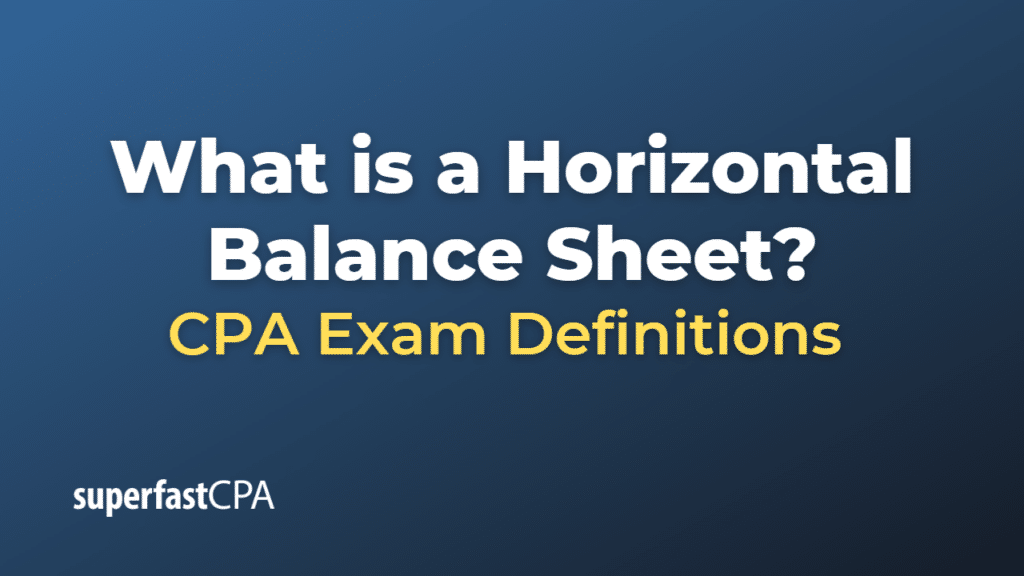Horizontal Balance Sheet
A horizontal balance sheet, also known as a comparative balance sheet, is a financial statement layout where multiple periods of balance sheet data are placed side-by-side, making it easy to compare and analyze changes over time. This format is called “horizontal” because the data for different periods is spread across horizontally.
The horizontal balance sheet provides a clear picture of how a company’s financial position has changed from one period to another. Analysts, investors, and other stakeholders use this format to assess trends in assets, liabilities, and equity over time.
For instance, a horizontal balance sheet might show a company’s balance sheet data for 2021 and 2022 side by side. It would help observers to see whether the company’s cash has increased or decreased, whether it has taken on more debt, or if its equity has grown, among other things.
Here’s a simplified example:
| Balance Sheet Item | 2022 ($) | 2021 ($) |
|---|---|---|
| Cash | 15,000 | 10,000 |
| Accounts Receivable | 25,000 | 20,000 |
| Total Assets | 100,000 | 90,000 |
| Accounts Payable | 10,000 | 15,000 |
| Long-Term Debt | 30,000 | 25,000 |
| Total Liabilities | 60,000 | 55,000 |
| Equity | 40,000 | 35,000 |
This horizontal balance sheet allows you to quickly compare each line item from year to year. For example, you can see that Cash has increased from $10,000 in 2021 to $15,000 in 2022.
Example of a Horizontal Balance Sheet
Let’s consider an example using a company’s balance sheet data for two years, 2022 and 2023:
ABC Company’s Horizontal Balance Sheet
| Balance Sheet Item | 2023 ($) | 2022 ($) |
|---|---|---|
| Cash | 50,000 | 40,000 |
| Accounts Receivable | 30,000 | 25,000 |
| Inventory | 20,000 | 15,000 |
| Total Assets | 100,000 | 80,000 |
| Accounts Payable | 20,000 | 10,000 |
| Long-Term Debt | 30,000 | 25,000 |
| Total Liabilities | 50,000 | 35,000 |
| Equity | 50,000 | 45,000 |
Looking at this horizontal balance sheet, we can observe several trends from 2022 to 2023:
- Cash increased by $10,000, indicating a stronger liquidity position.
- Accounts Receivable increased by $5,000, which could suggest higher sales but could also indicate slower payment from customers.
- Inventory increased by $5,000, suggesting potentially more products available for sale or less efficient inventory management.
- Total Assets increased by $20,000, showing the growth of the company.
- Accounts Payable increased by $10,000, suggesting the company may be taking longer to pay its suppliers or it has more suppliers.
- Long-Term Debt increased by $5,000, indicating the company has taken on additional debt.
- Equity increased by $5,000, showing that the company has retained earnings or issued more stock.
Remember, interpreting these trends would also require a deeper understanding of the company’s operations, industry conditions, and specific events that occurred during the years being analyzed.













